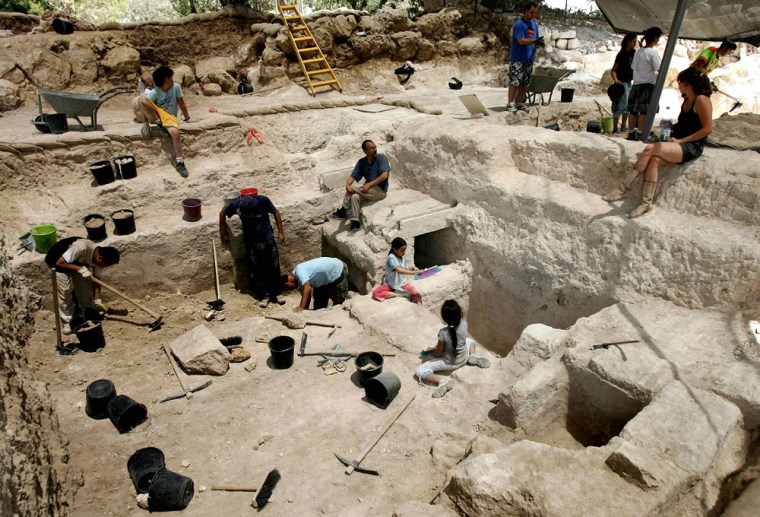Archaeologists in Israel have unearthed an ancient water system that was modified by the conquering Persians to turn the desert into a paradise.
The network of reservoirs, drain pipes and underground tunnels served one of the grandest palaces in the biblical kingdom of Judea.
Archaeologists first discovered the palace in 1954, a structure built on a six-acre (2.4-hectare) site where the communal Ramat Rachel farm now stands. Recent excavations unearthed nearly 750 square feet (70 square meters) of a unique water system.
“They had found a huge palace ... even nicer than the palaces in Jerusalem, (dating) from the late Iron Age to the end of the biblical period in the 7th century,” said Oded Lipschits, a Tel Aviv University archaeologist.
The infrastructure of the palace was remodeled throughout the centuries to fit the needs of the Babylonians, Persians, Romans and Hasmoneans who ruled the Holy Land, said Lipschits, who heads the dig with an academic from Germany’s University of Heidelberg.
But it was the Persians, who took control of the region around 539 B.C. from the Babylonians, who renovated the water system and turned it into a thing of beauty.
Lipschits said they added small waterfalls to try to turn a desert into a paradise.
“Imagine on this land plants and water rushing and streaming here,” Lipschits said. “This was important to someone who finds aesthetics important, for someone who wanted to feel as though they are not just in some remote corner in the desert.”
Yuval Gadot, a biblical archaeology expert from Tel Aviv University who is taking part in the excavation, said it was unclear exactly how the water system worked.
“Probably rainwater came down on the roof of the houses (in the palace complex),” he said. “From there, it was collected by drains into pools or to the underground reservoir and taken to nearby fields for crops or nice gardens.”
For centuries, water supplies have been one of the most sensitive issues in the Middle East, where most of the region is desert.
